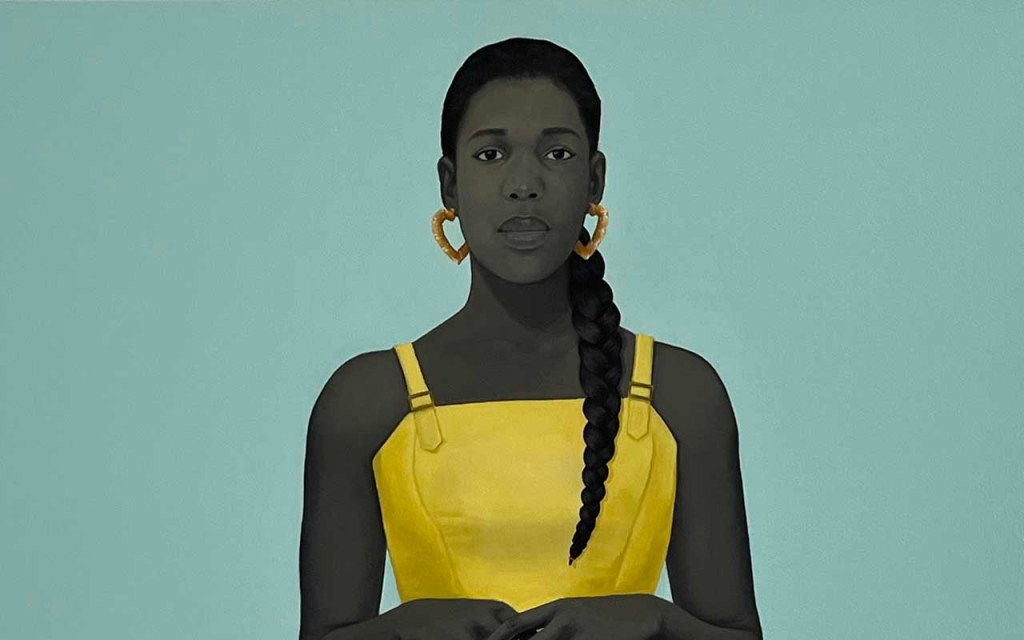Who’s Afraid of Successful Black Artists?



This spring, four solo exhibitions by Black artists — Amy Sherald at the Whitney, Rashid Johnson at the Guggenheim, Jack Whitten at MoMA, and Lorna Simpson at The Met — opened across New York City’s leading museums. Though each show is institutionally led and distinct in tone and scope, they share one commercial throughline: all four artists are represented by the mega-gallery Hauser & Wirth. As a result, the media has bundled these exhibitions into a neat label: “Hauser Spring.”
The phrase is catchy, but also revealing. It reframes independent institutional success as part of a commercial gallery’s seasonal programming, flattening curatorial histories and artist legacies into a convenient narrative of market dominance. In doing so, it exposes a broader discomfort with autonomous Black success, especially when that success operates beyond the direct control of galleries, studios, or auction houses.
This reframing is not limited to the art world. In film, a parallel case unfolded just weeks earlier with the release of Sinners, Ryan Coogler’s genre-bending vampire epic. The film opened at number one at the box office, earning $45.6 million in its debut and becoming the highest-grossing original film of the year to date. But unlike similarly ambitious films by white auteurs, Coogler’s success was met with guarded headlines. Variety described its profitability as uncertain, and industry insiders expressed concern about the film’s historic deal, which granted Coogler final cut, first-dollar gross, and ownership reversion after 25 years. Some executives reportedly warned that this could set a “very dangerous” precedent.
This reaction stands in stark contrast to the reception of Quentin Tarantino’s Once Upon a Time in Hollywood, which had a comparable production budget, a lower opening weekend, and no intellectual property advantage. That film was framed as a risk worth taking, a visionary’s passion project. Coogler’s film, despite outpacing it in performance, was framed as a potential liability.
In both cases, the same pattern emerges: When Black creators reach the highest levels of visibility while asserting structural autonomy, their success is not simply celebrated. It is managed — the institutional framing shifts from recognition to risk assessment.

“Hauser Spring” is not, strictly speaking, an act of appropriation. The artists in question have all been represented by the gallery for several years, and it is reasonable that Hauser & Wirth would feature their successes in its public communications. What is more telling, however, is how press coverage has framed these exhibitions as part of a coordinated gallery-driven moment, rather than as the product of long-standing curatorial planning within the museums themselves. This reframing subtly shifts credit away from the institutions and artists and toward the commercial infrastructure that surrounds them, revealing the soft mechanisms by which power recenters itself in the gallery system.
To be clear, Hauser & Wirth is not exploiting these artists so much as absorbing their visibility into its ecosystem. The gallery represents these artists, and they will undoubtedly benefit from the attention. But we must ask: Who actually produced the conditions of this moment? What does it mean when a museum’s programming, built on years of dialogue and planning, is absorbed into a mega-gallery’s seasonal strategy? And what happens when Black artists’ institutional relationships are made legible primarily through the lens of market alignment?
These questions become sharper when placed alongside a third example: the recent art market boom and bust involving young artists, many of them people of color, whose works became speculative assets before their practices had time to develop sustainably. A New York Times article published in August 2024, “Young Artists Rode a $712 Million Boom. Then Came the Bust,” documents how galleries and collectors inflated demand for these artists, pushing them into the auction spotlight. When the market cooled, many were left unsupported, with diminished value and little institutional backing.
This kind of market acceleration, followed by institutional abandonment, is not new. But when aligned with the “Hauser Spring” and Sinners coverage, it begins to suggest something more structural. In all three cases, Black creative labor is celebrated — but only when it reinforces the legitimacy of larger systems. When that labor pushes beyond those systems, whether through a film deal that grants ownership, a museum show that sidesteps gallery origin stories, or a career that spikes too fast to be controlled, it becomes framed as unstable, exceptional, or risky.

This is not to say that these artists are victims of the institutions that represent them. Sherald, Johnson, Whitten, and Simpson have long held strong, self-directed practices, and their collaboration with Hauser & Wirth is likely beneficial in material ways. Similarly, Coogler’s deal is a model of contractual power. But what is notable here is not the artists’ position, but the framing of their success. The institutional and media narratives surrounding these achievements rarely allow Black excellence to stand on its own. It must be contextualized, often neutralized, through association with traditional arbiters of value — galleries, studios, collectors.
If we take these three examples together, a clearer picture emerges. Black visibility is not inherently threatening to institutions. In fact, it is often welcomed, particularly in the post-2020 art world, where equity is part of the branding strategy. What becomes threatening is Black authorship, especially when it comes with leverage, longevity, or the ability to dictate the terms of engagement.
The lesson here is not to reject the role of institutions altogether. Galleries, museums, and studios can be important platforms. But we must remain vigilant about how narratives are constructed. When four museum retrospectives are framed as a gallery season, when a record-breaking original film is labeled a financial risk, when a young artist’s market surge is followed by silence, we should be asking not just who is visible, but who controls the frame.
Until we can disentangle visibility from institutional co-optation, Black cultural authority will continue to be celebrated, but only on someone else’s terms.





